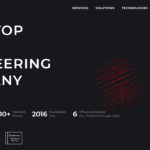
Ever gotten the feeling that every first-person shooter since then seems to be harder than the one before it?
Games such as Battlefield 6 are being developed with more advanced features, bigger maps, better visual quality, and gameplay that stretches the software and the speed of reaction of the player to their limits.
Although this enhances the gameplay experience, it also implies that performance optimization is frequently required of the player to achieve the entire experience.
Raw aim is no longer the issue of modern FPS titles. They are concerned with ensuring that your setup, tools, and strategies are in sync to compete favorably.
Why performance matters
Competitive gaming is based on performance. In fast-paced shooter games, it is often about who reacts better or who can hold the ground in a split-second battle. Performance in FPS games is characterized by three categories, namely: latency, frame rate stability, and recoil management.
Latency is the ratio of how fast your inputs are converted to on-screen action. Any player with a lower latency would have an inherent advantage since every millisecond matters.
Frame rate stability helps to balance the visuals even in scenes that include more action, such as explosive gunfire or in a multiplayer map. Recoil management also defines the consistency of the player in target hits, particularly when the weapons act unpredictably during rapid firing.
It is these performance components that, when combined, provide the atmosphere in which skills can prosper. Even experienced players can think that the game is against them without them.
The role of external tools
External tools are being necessitated as FPS titles continue to get more complex. These are mods, utilities, overlays, and optimization aids enabling players to make their experience unique.
Some of these tools are official and supported by the developer, whereas some are made by third-party authors to address the performance flaws or provide another feature.
As an example, frame rate boosters and graphics card optimization software will help make the game experience smoother as they will dynamically retain settings. Input- Lag reduction software, such as Nvidia Reflex or AMD Radeon Anti-Lag, offers a competitive advantage by shaving off a few valuable milliseconds.
Performance overlays enable the player to view real-time frame rates, CPU and GPU usage, or latency, allowing bottlenecks and settings optimization to be easily identified.
And in the most competitive situations, some players seek extra support. In the case of high-stakes lobbies, Battlefield 6 performance hacks for smoother competitive gameplay, which means that the player can keep up with the demanding pace of the game.
Mods and developer features
FPS has always had a part of mods. Since the initial customisation of titles, such as Counter-Strike, to the present-day visual customisation in games such as Valorant, mods enable users to customise their games and make the visuals appear more streamlined.
Most of these ideas have been implemented by developers, with features such as lower input delay, powerful field-of-view adjustments, and scaled dynamic resolution settings being added directly to titles.
An example is Battlefield 6, which has built-in performance options that automatically change the visuals during intense gameplay. Other games, such as Apex Legends and Call of Duty Warzone, offer tools with a balance between images and responsiveness, displaying the extent to which the need of the community to customize things has dictated the official design.
Training tools and performance utilities
Training software is also another critical area. Training games, such as Aim Lab and the FPS Aim Trainer created by Kovaak, have become the standard training tool of competitive players.
These devices allow one to train on target tracking, flick shots, and reaction times under controlled conditions. These utilities are used like virtual gyms by many players who warm up before matches to be at their best.
Equally, system-level technology such as Nvidia Reflex minimizes the input lag by synchronizing the CPU and the graphics card, and AMD Radeon Boost can dynamically reduce the resolution when the character is moving fast in order to sustain a higher frame rate.
Real-world examples of performance enhancements
Take a game, such as Valorant or Counter-Strike 2, in which precise aiming is the key to success. Those who create such titles have optimized netcode and provided settings where low latency is important rather than graphical polish.
When it comes to competitive modes, flashy visuals are not a part of it, but clarity, speed, and control are. The tools that help in these objectives are never a luxury item, but essential aids in competitive play.
Demand for performance aids is also exhibited in Call of Duty Warzone. Having huge maps and 150-player lobbies, stable frame rates are achieved through a mix of in-game and third-party optimization.
In such a demanding environment, players tend to use overlays, hardware tuning, and third-party training software in order to keep up.
Balancing tools and skills
Tools improve performance, but they do not substitute player skill. The learning to push, regulate spray patterns, and predict enemy movement are some skills that no optimization can deliver. Performance tools merely clear the pathway towards those skills to shine.
It is a trade-off between planning and action. Such tools as overlays, reflex enhancers, and aim trainers are the basis. It is the foundation of such skills as strategy, awareness, and adaptability. This balance characterizes the modern FPS competitions, in which even professional players resort to all available means to have a benefit.
This has been increased with the emergence of esports, teams spending money on specialized training apps and hardware optimization to achieve optimal performance.
The future of FPS performance tools
In the future, performance devices will keep defining FPS gaming in a thrilling manner. More mainstream technologies, such as DirectStorage, which can load and stream assets faster, and AI-powered performance optimizers that can dynamically change system settings, will become more common.
Whereas VR and AR, which would position performance coaching in more immersive dimensions, cloud-based training platforms are likely to enable players to receive performance coaching regardless of location.
With the increasing size of games and more and more intricate mechanics, performance tools will be the ones that get to bridge the gap between the grandiose design and competitiveness and flawless gameplay. Not only will they serve the players, but they will also shape the way developers will go about optimization in subsequent titles.
Conclusion
FPS gaming has reached a level where playing skill is no longer as crucial as performance. Developers are providing huge, intricate experiences, and it is the tools that enable players to compete in them. Since mods and utility, external aids are the new standard of modern competition, such as Nvidia Reflex and aim trainers. To the contemporary gamer, the issue of using skills or tools is in the past; it is now about the fusion of the two. Preparation, optimization, and execution are considered to be a combination that defines success. And with Battlefield 6, as well as any other FPS game, on the verge of further development, the role of performance tools will still be at the core of defining the future of competitive games.










Leave a Reply